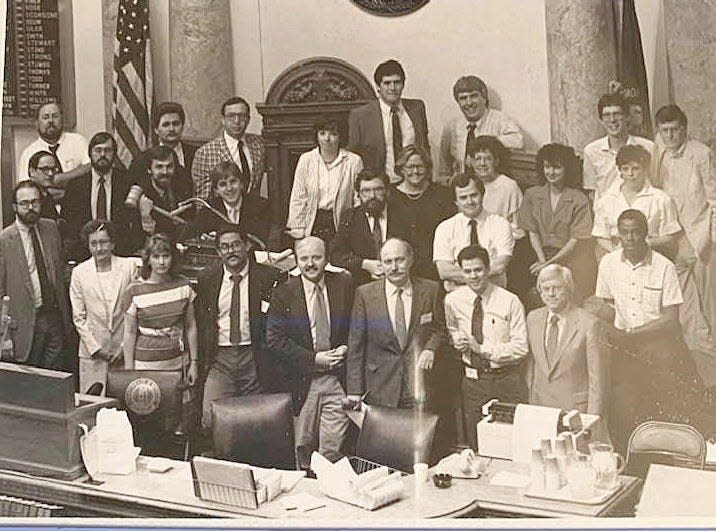Beginning at The Courier Journal shaped me as a journalist and how media has changed: Opinion
I first walked into the lobby of The Courier Journal’s Broadway office when I was five. I thought I was walking into the lobby of the Radio City Music Hall in New York.
My mother ushered me into the elevators and we went to the top floor of the building where I and dozens of other kids near my age gathered for WHAS- TV’s T-Bar-V Ranch - the local children’s show featuring Randy Atcher and Tom “Cactus” Brooks. The Bingham family owned both the paper and the television station.
Randy and “Cactus” taught us to “cross at the corner of the block, never in between. And when the light is red you stop - go when it turns green.” Then each individual child got to walk up and tell one of the two hosts what we wanted for our birthday. The boy before me wanted a BB gun, but no one told him he’d shoot his eye out. I asked for a microscope. Then we all gathered, sang Happy Birthday and stared that wonderfully large cake that was on stage. I couldn’t wait to get a slice. It looked great. My heart broke when I saw that it was made of plaster.
Many remarkable memories of my youth surround The Courier Journal and the Binghams. I learned of the Vietnam War by reading that paper every day and remember the body count piling up. “PFC. Gibson Comes Home” by John Fetterman written in 1968 won a Pulitzer. In 1974 Carol Sutton became the managing editor. She was the first woman appointed to such a post at a major newspaper.
Read it here: Look back | PFC. Gibson comes home
For a brief time in the 1980s I worked as a dedicated stringer for the Neighborhood section of the newspaper - I had reached my long-sought goal of working for my hometown newspaper. On the pole that contained electric chords to the desk I shared with others I taped a favorite quote of mine from H.L. Mencken about reporters. “He doesn’t wear himself out trying to get the news as romance has it; he slides supinely into the estate and dignity of a golf player. American journalism suffers from too many golf players.”

One day, returning from an interview the office manager of the neighborhood section informed me “Senior would like to see you upstairs.” Barry Bingham Sr. had given up daily control of the paper more than a dozen years before I was hired. He had no reason to speak to the lowest man on the totem pole, which was me. But he did and I assumed I’d done something that would mean I would need to search for gainful employment elsewhere. Mind you I had no idea what it could be.
But Senior merely wanted to reflect on the quote I’d taped above my desk and told me firsthand stories of H.L. Mencken - referring to him by his first name of Henry. I was mesmerized - particularly when he told me that Mencken was “a wonderful burster of balloons at time balloons needed to be burst.”
More: Courier Journal named first woman managing editor, then dropped her
Mencken is long gone and so is Bingham. The journalistic world they populated no longer exists.
There are more than twice the number of people on this planet than on the day I was born and probably half the number of reporters.
Media constriction, buyouts, corporate raiders and “vulture” capital groups have closed and led to the downsizing of most newspapers and plenty of broadcast stations. Those left - particularly in local television - are vanilla-flavored chain stores with little original reporting.
Leaving us in a world that has neither the community feel of Randy Atcher and Cactus Brooks nor the keen insight to burst the balloons that need to be burst.

Brian Karem is the author of “Free the Press - The Death of American Journalism and how to Revive it”. He is a Louisville native and long-time White House correspondent. He currently writes a column for Salon.Com
This article originally appeared on Louisville Courier Journal: Beginning at The Courier Journal shaped me as a journalist
